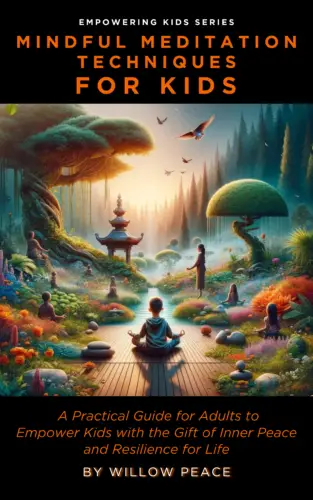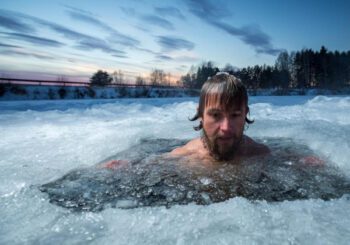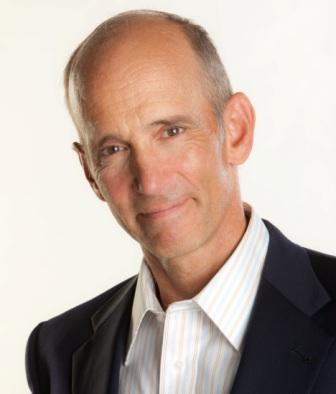Contributing writer for Wake Up World
As holistic health gains hold, a number of ancient wellness practices are being embraced and promoted. According to a March 2, 2020, article1 in The Guardian, many of these practices are rooted in the European wellness culture. Following is a sampling of ancient holistic health traditions making a comeback. How many of them have you tried?
The Siesta
Spain has a long history of taking a siesta during the hottest time of the afternoon. To this day, many Spaniards will take a break from work in the afternoon and work later into the evening to compensate. The Guardian quotes Paul Joseph, founder of Health and Fitness Travel:2
“Even just slowing down for a short period of time allows you to disconnect from the world and subsequently boost energy, focus and creativity.”
The research on napping is mixed, however, with some studies showing benefits such as lowering the prevalence of heart disease (particularly among working men),3 improving learning,4 boosting emotional stability and lowering blood pressure, while others show it may actually increase the risk of high blood pressure, diabetes and cognitive decline, especially in older adults.5
While it’s unlikely that naps are directly causing these health problems, the association exists nonetheless, and more research is needed to determine who benefits from naps, who doesn’t and why.
Mud Treatments
Mud treatments and mud wraps, which have been used therapeutically for 25 centuries,6 were popularized by the Italians during the Roman Empire. Mud therapy is often referred to as fangotherapy, after the Italian word “fango,” which means “mud.”
Mud is generally advertised as having cleansing and relaxing, antistress effects, but science suggests its health benefits may be far-reaching. As reported in the Spanish journal Anales de Medicina Interna:7
“Mud has a place as a non-pharmacological tool in certain clinical settings, such as degenerative articular processes, skin disorders, and others … Fangotherapy in arthritis patients seems to cause variations in amino acid involved in cartilage homeostasis, and also produce reduction in pain ratings in gonarthrosis.
Mud modifies nitric oxide, myeloperoxidase and glutathione peroxidase serum levels in arthritic patients and beta-endorphin and stress hormones in patients affected by osteoarthritis by reducing inflammation, pain and therefore diminishes the cause of stress.
[It] has been confirmed that the thermal stress associated with Fangotherapy activates the pituitary gland … Furthermore, steroids and antimicrobial activity of certain therapeutic mud has been suggested.”
Contrast Therapy
Contrast therapy typically involves the use of sauna followed by cold-water immersion, either in a lake, pool, shower or bath. In the winter, immersing yourself in snow is another option. Sauna bathing has a long history in Finland.
To this day, most homes in Finland have a built-in sauna. Sauna bathing has been shown to strengthen heart health and offer significant protection against cardiovascular diseases,8 and adding the contrast of a cold dip afterward can further magnify those effects.
Sauna bathing is one of my favorite therapies as it generates heat shock proteins that repair protein misfolding, which is a major part of aging and disease. I believe this is why all-cause mortality is so radically decreased in Finns who sauna more than five times a week.
Sweating in a sauna will also help eliminate toxins, improve blood circulation, kill disease-causing microbes and improve your mitochondrial function. Research has even shown that regular sauna use correlates with a reduced risk of death from any cause, and may help stave off Alzheimer’s disease and dementia.
For example, researchers in Finland found that men who used a sauna four to seven times a week for an average of 15 minutes had a 66% lower risk of developing dementia, and 65% lower risk of Alzheimer’s, compared to men who used the sauna just once a week.9,10
Recent research11 has also demonstrated that sauna bathing helps modulate your autonomic nervous system, which governs your stress responses.12 This helps explain why most people feel “nice and mellow” afterward.
There is a compelling body of evidence showing exposure to harsh conditions can be highly beneficial and that extreme temperature variations help optimize many biological functions. Like exposure to heat, exposure to cold boosts mitochondrial function and numbers. Cold thermogenesis has also been shown to:13,14,15
| Strengthen joint tissue and improve | Support weight loss efforts by increasing metabolism |
| Increase blood circulation | Reduce symptoms of depression and anxiety by at least 50%16 |
| Speed rate of recovery following joint or muscle injury17 | Provide temporary relief lasting about 90 minutes from pain associated with arthritis18 |
| Reduce pain and swelling following injury | Reduce your risk of developing cognitive decline and dementia by reducing inflammation and oxidative stress19 |
| Reduce inflammation | Improve symptoms of eczema20 |
| Enhance benefits of physical therapy | Reduce pain associated with migraines when applied to the back of the neck for about 30 minutes21 |
| Improve muscle function and strength | Boost mental focus and attention by increasing production of norepinephrine in your brain.
Norepinephrine can be increased twofold just by getting into 40-degree F. water for 20 seconds, or 57-degree water for a few minutes |
Forest Bathing and Uitwaaien
Forest bathing is the English translation of the Japanese term “shinrin-yoku.” As the term suggests, it refers to the restorative and “cleansing” effects of spending time in forests and other nature spaces. In Japan, it’s a revered and long-standing tradition known to promote health and well-being.
The benefits of forest bathing go beyond the obvious. As explained in the film, “Call of the Forest,” trees have medicinal properties.22 For example, limonene, produced by trees, is an anticancer compound used in chemotherapy.
Linolenic acids aid brain functioning and pinenes have antibiotic properties. Inhaling these and other compounds emitted by trees can provide a mildly narcotic effect while boosting immune function and relaxing your body. The soil of the forest also has healing powers, including soil bacteria shown to improve mood, so don’t be afraid to get your hands dirty.
The Dutch word “uitwaaien” is a similar term, but refers more specifically to spending time outdoors in “wild, windy weather.” According to The Guardian:23
“By replacing ‘bad air’ with ‘good air,’ it is believed to leave you feeling clear-headed and refreshed. ‘It feels exhilarating — wind is distracting, so it’s sort of meditative, in the sense you cannot think about anything else,’ says [Global Wellness Institute research director, Beth] McGroarty.”
Without doubt, spending more time in nature is one of the simplest ways to improve your general well-being and emotional health.
A massive study24 involving data from more than 140 trials and 290 million people revealed exposure to greenspace — defined as open, undeveloped land with natural vegetation — led to significant reductions in diastolic blood pressure, salivary cortisol (a physiological marker of stress) and heart rate, along with significant decreases in Type 2 diabetes and mortality from all causes and those specifically related to the heart.
Sources and References:
- 1, 2, 23 The Guardian March 2, 2020
- 3 Arch Intern Med. 2007 Feb 12;167(3):296-301
- 4 The Guardian February 22, 2010
- 5 Sleep Med. 2017 Sep; 37: 88–97
- 6, 7 An Med Interna. 2007 Jul;24(7):352-3
- 8 JAMA Internal Medicine 2015;175(4):542-548
- 9 Age and Ageing March 2017; 46(2): 245-249
- 10 Reuters January 19, 2017
- 11 Complement Ther Med. 2019 Aug;45:190-197
- 12 Harvard Health Publishing March 2011, Updated May 1, 2018
- 13 Scandinavian Journal of Medicine and Science in Sports August 1996, DOI: 10.1111/j.1600-0838.1996.tb00090.x
- 14 The Physician and Sports Medicine 2010; 38(3): 38-44
- 15 Medical News Today October 19, 2017
- 16 Archivum Immunologiae et Therapie Experimentalis 2008 Feb; 56(1): 63–68
- 17 International Journal of Sports Physiology and Performance March 2017; 12(3): 402-409
- 18 Rehabilitation 2000 Apr;39(2):93-100
- 19 Medical Hypotheses 2012 Jul;79(1):56-8
- 20 JAMA Dermatology June 1, 2008; 144(6): 806-808
- 21 Hawaii Journal of Medicine and Public Health 2013 Jul; 72(7): 237–241
- 22 Call of the Forest
- 24 Environmental Research October 2018, Volume 166, Pages 628-637
About the author:
Born and raised in the inner city of Chicago, IL, Dr. Joseph Mercola is an osteopathic physician trained in both traditional and natural medicine. Board-certified in family medicine, Dr. Mercola served as the chairman of the family medicine department at St. Alexius Medical Center for five years, and in 2012 was granted fellowship status by the American College of Nutrition (ACN).
While in practice in the late 80s, Dr. Mercola realized the drugs he was prescribing to chronically ill patients were not working. By the early 90s, he began exploring the world of natural medicine, and soon changed the way he practiced medicine.
In 1997 Dr. Mercola founded Mercola.com, which is now routinely among the top 10 health sites on the internet. His passion is to transform the traditional medical paradigm in the United States. “The existing medical establishment is responsible for killing and permanently injuring millions of Americans… You want practical health solutions without the hype, and that’s what I offer.”
Visit Mercola.com for more information, or read Dr. Mercola’s full bio and resumé here.
Aging and dying are natural, yet society often teaches us to resist them. Sandra Ingerman offers a transformative perspective, revealing how these life stages hold profound spiritual meaning. In the free online video event Explore Death as a Rite of Passage With Shamanic Wisdom, you’ll learn to embrace these transitions with peace and gratitude.
Through shamanic practices, Sandra will guide you in releasing fears and uncovering the sacred lessons hidden in aging and death. You’ll experience a powerful, guided journey into nature’s wisdom, gaining insight into the interconnected cycles of life and death.
Don’t let fear of the unknown hold you back from living fully. Join Sandra for this free online event to discover tools and insights that will forever change how you view life’s transitions. Register Here
 If you’ve found value in our articles, we’d greatly appreciate your support by purchasing Mindful Meditation Techniques for Kids—A Practical Guide for Adults to Empower Kids with the Gift of Inner Peace and Resilience for Life.
If you’ve found value in our articles, we’d greatly appreciate your support by purchasing Mindful Meditation Techniques for Kids—A Practical Guide for Adults to Empower Kids with the Gift of Inner Peace and Resilience for Life.
In the spirit of mindfulness, we encourage you to choose the paperback version. Delve into its pages away from screen glare and notifications, allowing yourself to fully immerse in the transformative practices within. The physical book enriches the learning process and serves as a tangible commitment to mindfulness, easily shared among family and friends.
Over the past few years, Wake Up World has faced significant online censorship, impacting our financial ability to stay online. Instead of soliciting donations, we’re exploring win-win solutions with our readers to remain financially viable. Moving into book publishing, we hope to secure ongoing funds to continue our mission. With over 8,500 articles published in the past 13 years, we are committed to keeping our content free and accessible to everyone without resorting to a paywall.









